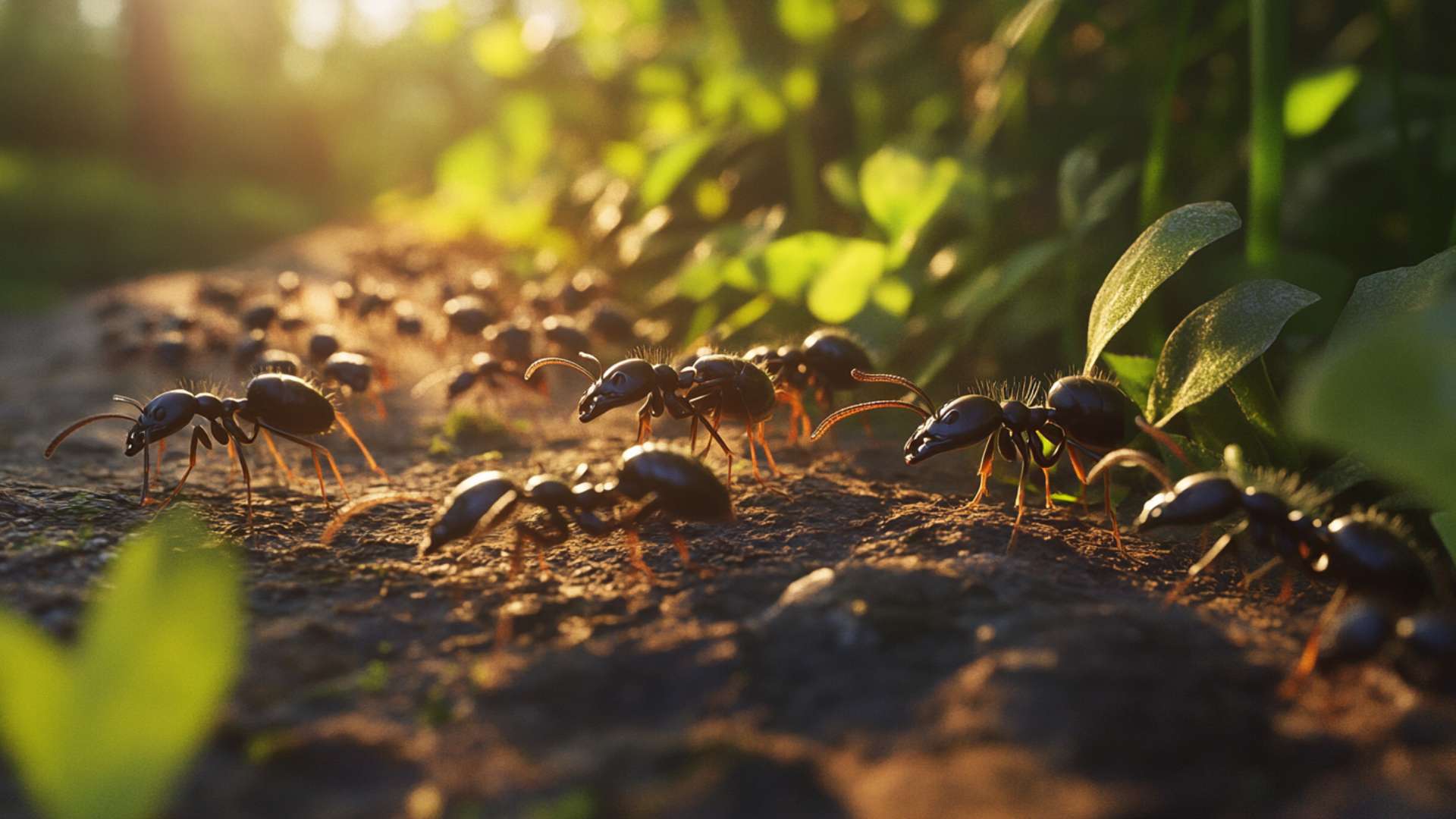In the vast desert landscape of Las Vegas, where scorching temperatures and arid conditions prevail, one might not expect ants to thrive. However, these resilient insects have managed to establish their presence in this urban oasis.
Ants are more than just small creatures scurrying across the ground; they play a crucial role in maintaining the delicate balance of ecosystems by participating in soil aeration, nutrient cycling, and even acting as decomposers. Las Vegas is home to a diverse array of ant species, each with its unique characteristics and behaviors.
These fascinating insects exhibit remarkable social structures within their colonies, with an organized division of labor between different castes such as queens, workers, and soldiers. Understanding the various ant species found in Las Vegas can help homeowners and residents recognize the potential for pest control for infestations or appreciate these tiny inhabitants that coexist with them.
Brief Overview of the Importance of Ants in Ecosystems
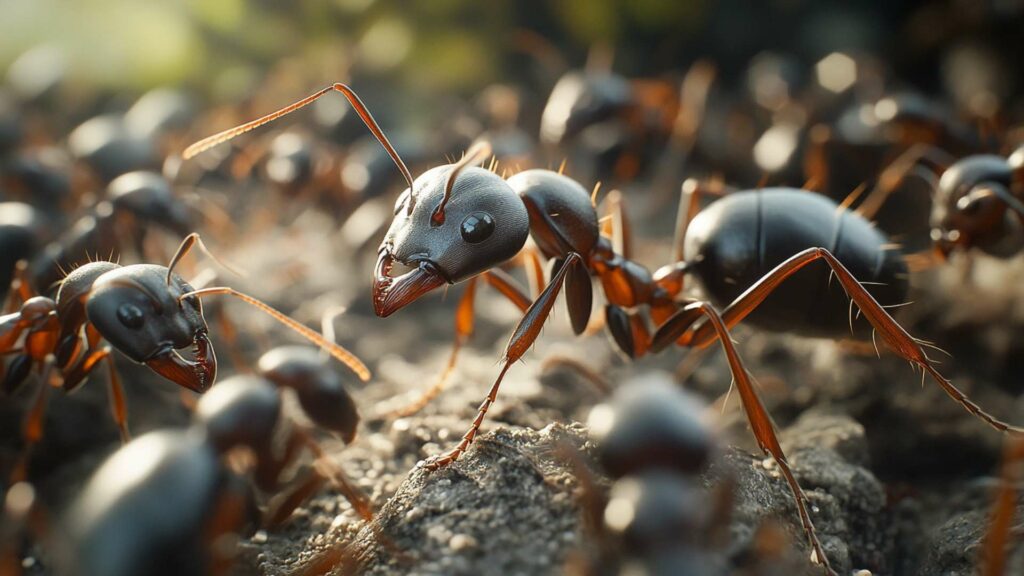
Ants may be small individually, but collectively they hold immense ecological significance. These industrious creatures aid in dispersing seeds by carrying them over long distances or storing them underground for future consumption by other ants.
Some ants even cultivate fungus gardens within their nests for food sources. Moreover, ants are essential predators and scavengers that regulate populations of other insects and clean up organic matter from the environment.
They aerate soil through their tunneling activities, enhancing water filtration and nutrient absorption for plants. Additionally, ant colonies serve as food sources for other animals like birds and mammals.
Introduction to the Diverse Ant Species Found in Las Vegas
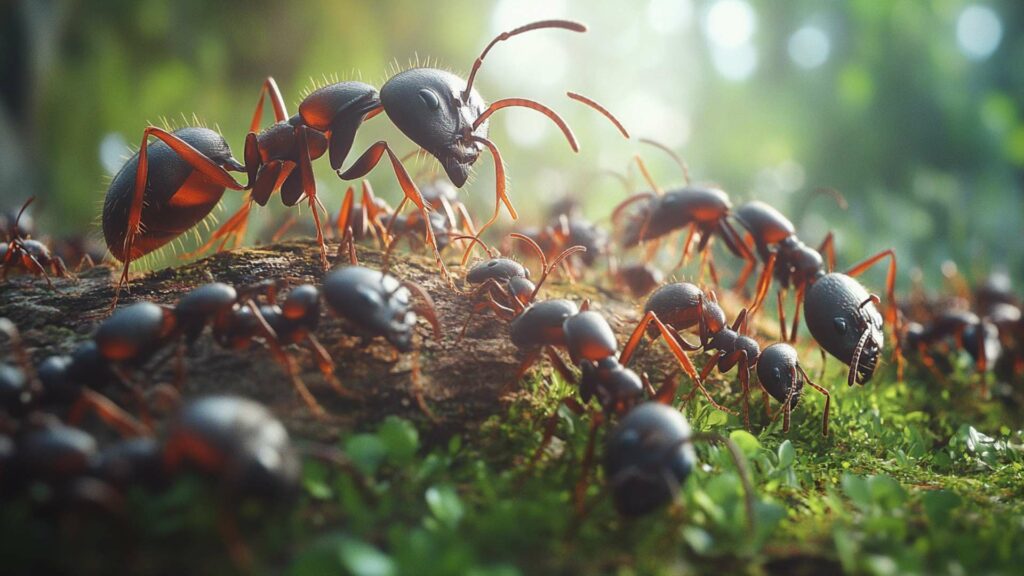
The dry climate of Las Vegas attracts several common ant species that have adapted remarkably well to these harsh conditions. The Argentine ants (Linepithema humile) are among the most prevalent pests in the region. These small, brown ants form massive colonies that can quickly infest homes and gardens.
Another commonly encountered species is the pavement ant (Tetramorium caespitum), recognizable for their dark brown or black coloration. They often build their nests under sidewalks and driveways, becoming a nuisance for homeowners.
Red Imported Fire Ants (Solenopsis invicta), although not native to Las Vegas, have become established in some areas and are notorious for their aggressive behavior and painful stings. Carpenter ants (Camponotus spp.), with their ability to damage wood structures by excavating tunnels, pose a threat to buildings in Las Vegas as well.
As we delve deeper into the world of ants in Las Vegas, we will explore these species, their habits, impact on ecosystems, and potential interactions with humans. By understanding these remarkable insects better, we can coexist harmoniously with them while taking necessary precautions to mitigate any disturbances they may cause.
The Most Common Ant Species in Las Vegas
Argentine Ants

Argentine ants are one of the most prevalent ant species found in Las Vegas. These small, mostly dark brown or reddish-brown ants measure about 1/8 inch long and are commonly mistaken for odorous ants or black ants. They have a distinctive sweet, musty smell when crushed.
Argentine ants are highly adaptable and known for their aggressive behavior towards other insects, often outcompeting them for resources. These ants prefer moist areas such as gardens, lawns, and near water sources.
They build their nests in soil cavities, under rocks, or in decaying wood. Their colonies can grow to enormous sizes with multiple queens and countless workers.
Due to their high numbers and aggressive nature, Argentine ant infestations can disrupt local ecosystems by displacing native ant species and disrupting the food chain. In urban areas, an infestation of Argentine ants can become a nuisance to homeowners as they seek food indoors.
They are attracted to sugary substances and will invade kitchens or pantries in search of sweets or crumbs. While they do not sting like some other ant species, their presence can be bothersome as they leave trails of pheromones that attract more of their kind.
Pavement Ants
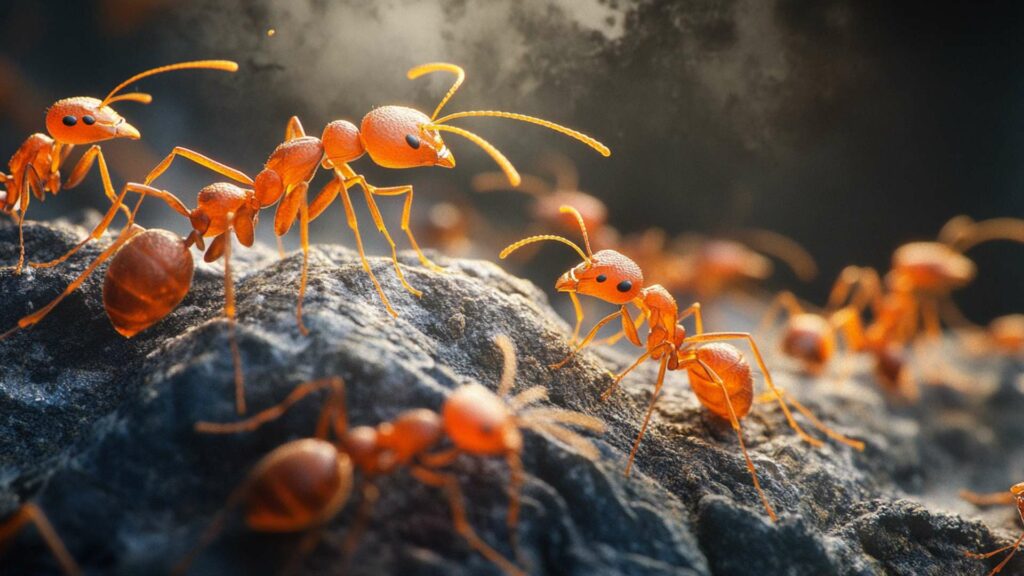
Another common ant species found in Las Vegas is the pavement ant (Tetramorium caespitum). These small brownish-black ants are named for their preference for nesting beneath sidewalks, driveways, and other paved surfaces. They measure around 1/8 inch long and have parallel lines running across their thorax.
Pavement ants have a diverse diet that includes both sweet and protein-based foods. They scavenge for crumbs or spills in residential areas but also feed on dead insects or plant matter when necessary.
While they don’t pose significant risks to human health or cause structural damage, they can become a nuisance to homeowners when they invade kitchens or contaminate food. Pavement ants are known for their ability to form multiple colonies and interconnected nests.
They often establish satellite colonies, making it challenging to eradicate them completely. Homeowners may find small piles of displaced soil near the entrances of their nests or see the ants marching in trails along sidewalks or edges of buildings.
Red Imported Fire Ants (RIFA)
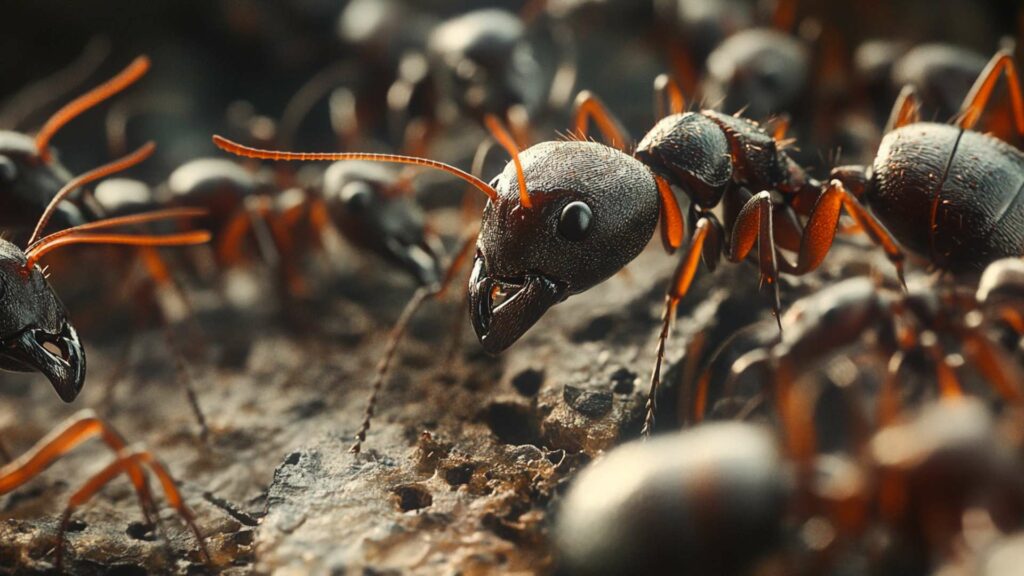
Red Imported Fire Ants (Solenopsis invicta), commonly known as RIFA, were introduced to Las Vegas through human activities. These aggressive ants have a reddish-brown coloration and measure about 1/4 inch long. Their distinctive feature is their painful sting, which delivers a venomous bite that leaves a visible welt.
RIFA mounds are easily identifiable and can be found in open areas such as lawns, fields, or parks. These mounds appear as dome-shaped dirt piles with no visible entrance hole.
The colonies within these mounds can contain thousands of worker ants led by multiple queens. What makes RIFA particularly concerning is their aggressive behavior when the nest is disturbed.
They will aggressively defend their colony by swarming onto any perceived threat and stinging repeatedly. The venom from RIFA stings can cause intense pain, itching, swelling, and even allergic reactions in susceptible individuals.
In addition to the painful bites/stings they inflict on humans and pets, RIFA also has negative effects on local ecosystems. They compete with native ant species for resources and prey on other insects like bees and grasshoppers.
These impacts highlight the need for proper management strategies to prevent the spread of RIFA populations in Las Vegas. By understanding the characteristics and behaviors of these common types of ant species in Las Vegas – Argentine ants, pavement ants, and Red Imported Fire Ants – we can better navigate encounters with these fascinating creatures while effectively managing any potential issues they may cause in our ecosystems and homes.
Lesser-Known Ant Species in Las Vegas
Carpenter Ants: The Silent Wood Destroyers
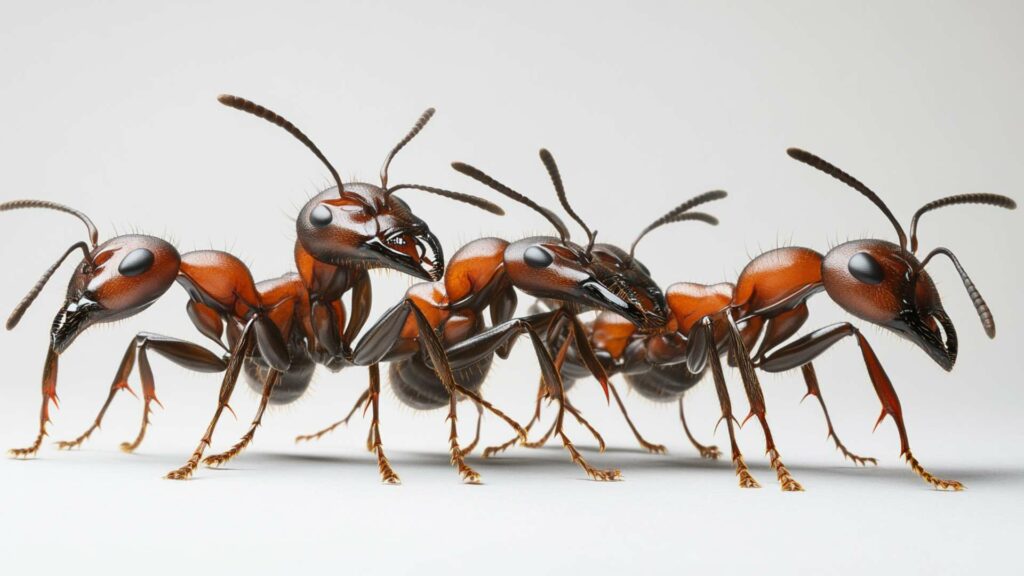
Carpenter ants, often mistaken for termites, play a significant role as pest and wood-destroying insects in Las Vegas. These pests have a particular affinity for moist areas and are attracted to damp wood.
With their sophisticated mandibles and strong jaws, carpenter ants effortlessly chew through wooden structures to create their nests. The impact on the structural integrity of buildings cannot be underestimated, as these industrious insects can cause extensive structural damage over time.
Carpenter ants nest ant colonies typically consist of worker ants responsible for the excavation of galleries within wood. These galleries serve as their nests and are meticulously constructed with connecting tunnels leading to various chambers.
Unlike termites or ghost ants that feed on wood cellulose, carpenter ants do not consume it but rather excavate it to create space for their expanding colony. This process weakens the structural integrity of wooden beams, floors, and other vulnerable areas in homes or buildings.
To prevent infestations and minimize the impact of carpenter ants on structures, it is crucial to identify signs such as small piles of sawdust-like frass near damaged wood or the presence of large winged ants emerging from nesting sites. Prompt action should be taken if any signs are detected by contacting professional pest control services equipped to handle carpenter ant infestation and colonies effectively.
Harvester Ants: Mighty Foragers with an Ecological Role

In the arid landscape of Las Vegas, harvester ants stand out due to their larger size and robust mandibles. These industrious insects play a vital role in seed dispersal by collecting seeds from various plants as their primary food source.
Harvester ants have intricate interactions with other wildlife species that rely on them for both sustenance and propagation. With powerful mandibles adapted for cutting through hard shells, harvester ants gather and transport seeds back to their nests.
This behavior aids in the dispersal of plants across the ecosystem, contributing to the overall biodiversity and vegetation in Las Vegas. Furthermore, birds like horned larks and longspurs heavily depend on harvester ants as a crucial food source, highlighting their significance within the local wildlife network.
While encountering harvester ants might be intimidating due to their size, they generally do not pose a direct threat to humans unless provoked. However, it is advisable to maintain a respectful distance when observing these fascinating creatures in their natural habitat.
Appreciating their ecological role reminds us of the intricate connections between insects and larger natural systems. By understanding the characteristics and behaviors of lesser-known ant species such as carpenter ants and harvester ants, we gain insights into the diverse roles that ants play within Las Vegas ecosystems.
Awareness of these insects enables us to appreciate both their ecological contributions and potential impact on our daily lives. With this knowledge in hand, we can take appropriate measures to coexist harmoniously with these remarkable creatures while ensuring our structures remain intact against wood-destroying pests like carpenter ants.
Unusual or Rarely Seen Ant Species in Las Vegas
Velvety Tree Ants

Subtly elegant and remarkably rare, velvety tree ants (scientifically known as Liometopum occidentale) are a captivating species that add a touch of enchantment to the dynamic ant population in Las Vegas. These ants derive their name from their distinctive velvety appearance, which is achieved through a dense coat of fine hairs covering their bodies. Their dark brown exoskeletons possess a unique sheen, akin to the satin fabric of an evening gown.
This visual allure distinguishes them from other more commonly found ants. Preferred among trees and shrubs, velvety tree ants establish their nests within crevices of bark or beneath decaying wood.
They exhibit an affinity for woody habitats due to their reliance on honeydew-producing insects that thrive in such environments. These resourceful creatures have evolved specialized relationships with aphids, scale insects, and mealybugs, establishing mutualistic partnerships where they protect these tiny sap-suckers from predators in exchange for the sweet nectar-like secretion they produce.
While most ants are not considered pests like some other ant species, velvety tree ants play a vital role in ecosystem balance. By managing the populations of honeydew-producing insects and participating in nutrient cycling through decomposition processes, these ants contribute to the overall health and vitality of their natural surroundings.
Conclusion
The world beneath our feet is teeming with an astounding variety of ant species, each possessing its own remarkable characteristics and playing a unique role within ecosystems. In Las Vegas alone, these industrious creatures showcase an array of captivating traits that deserve our admiration.
From the common Argentine and pavement ants bustling through urban landscapes to the rarely seen velvety tree ants adorning trees with their enchanting presence – each ant species adds to the rich tapestry of natural diversity. As we observe and appreciate these tiny creatures, it’s important to remember that ants, regardless of their species or habitats, hold immense value in maintaining ecological balance.
Their tireless work as nature’s custodians, be it through pollination, seed dispersal, or decomposition processes, ensures the smooth functioning of ecosystems. So let us marvel at their intricate societies and recognize their indispensable contributions to the world we share.
Deter Ants with D-Termination: Las Vegas’ Leading Pest Control Service!

If you’re contending with ant problems, D-Termination is your answer. Our experienced team excels at discouraging ants, revitalizing cleanliness, and preserving the integrity of your surroundings. Bid farewell to ants—select D-Termination for effective pest control today!
Reach out to us at 702-919-6310 or visit dtermination.com to schedule your ant control service and regain your space from these unwelcome pests.
Frequently Asked Questions:
Ant problems in Las Vegas can occur, but they vary depending on the area and conditions.
Various ant species can bite in Nevada, including red harvester ants and Argentine ants.
The small red ants commonly found in Las Vegas are often red harvester ants.
To get rid of ants in Las Vegas, you can use ant baits, maintain cleanliness, and seal entry points into your home.

